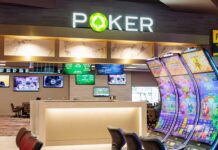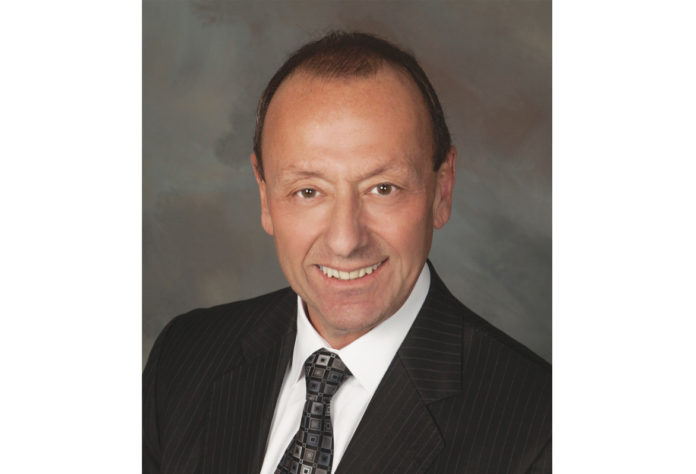by Andrew Klebanow
In mid-2020, as casinos across the U.S. began to resume operations after the onset of the pandemic, gaming operators implemented a variety of measures in order to provide safe environments for their employees and guests. Commercial operators primarily relied on state gaming regulators to establish safety standards while Indian tribes turned to local and state health departments for guidance as well as their own tribal regulatory authorities.
Many Indian tribes established health and safety protocols that exceeded county and state requirements. One such protocol was the suspension of indoor smoking. For any number of reasons, including the difficulty in enforcing mask mandates when customers smoked or the recognition that COVID-19 was spread through airborne particulates, many Indian casinos across the U.S. implemented smoking bans.
By the end of 2020, over 200 Indian casinos across the U.S. introduced smoking bans including Foxwoods Resort Casino and Mohegan Sun in Connecticut, as well as two of the largest casinos in California: the Pechanga Casino Resort and the Yaamava’ Resort and Casino at San Manuel. Two years after the onset of the pandemic, 157 Indian casinos remain 100 percent smoke free.
Today, Indian casino policies regarding indoor cigarette smoking have evolved into four distinct categories:
1) Complete bans on indoor smoking with a commitment that those bans remain permanent.
2) Complete bans on indoor smoking with the possibility that smoking might be re-introduced sometime in the future.
3) Partial restrictions on indoor smoking with more gaming space allocated to non-smoking areas.
4) A return to smoking policies that were in place prior to the pandemic.
Permanent Bans Codified into Law by Tribal Leadership
On May 5, 2020, the Angel of the Winds Casino Resort in Arlington, WA became the first Indian casino to publicly announce that it would re-open as a non-smoking property, and that the new policy would be permanent. Leadership had looked at their local demographics and found that 87 percent of the surrounding counties’ adults were non-smokers. Prior to the pandemic, Angel of the Winds provided a separate non-smoking gaming area that was partitioned from the main casino floor with the majority of gaming space designated as a smoking zone. The question that was asked by leadership was, why give thirteen percent of the population the vast majority of the casino’s gaming space? They also saw an opportunity to attract a demographic that did not like smoking environments.
By the end of 2021, more tribes announced that their smoking bans would also be permanent. These included some of the largest gaming enterprises in the U.S. as well as many smaller casinos. Among them were the Ho-Chunk Nation, operator of five casinos in Wisconsin; the Forest County Potawatomi, operator of the Potawatomi Casino & Hotel in Milwaukee; the Navajo Nation, operator of four casinos in New Mexico and Arizona; the Eastern Band of Cherokee Indians, owner of two casino resorts in North Carolina; and Pechanga Casino Resort, one of the largest and most successful gaming enterprises in the U.S.
Provisional Bans on Indoor Smoking
The majority of Indian casinos that chose to prohibit smoking continue to do so today without having made any formal announcements that their policies would be permanent. In the greater Albuquerque gaming market, where five casinos compete for their share of the local and regional gaming market, all of the properties implemented property-wide smoking bans when they re-opened in 2020 and those bans remain in place today. Only one property announced that its ban would be permanent. The others may be waiting to see what their competitors may do in the future. To date, no one has made a move to re-introduce smoking in their casinos.
Partial Restrictions
In addition to the 157 properties that no longer permit indoor smoking, a large number of casinos have dramatically reduced the amount of gaming space where smoking is permitted. Many have simply flipped their space allocation, converting former non-smoking areas into smoking zones. Those zones often include areas that were walled off from the main gaming floor, essentially pushing smokers to the back of the casino. Not surprisingly, those newly designated smoking zones have performed at rates similar to what they did when they were non-smoking areas. This lends credence to the belief that location, mix of games, and isolation from the main gaming floor all play an important role in machine performance – and not smoking policy.
Return to Pre-Pandemic Policies
For many operators, the primary goal after re-opening in 2020 was to return to business as usual as quickly as possible, which included restoring pre-pandemic smoking policies. In their defense, they recognized that the revenues generated by their gaming enterprises were a critical source of funding for tribal services and did not want to put those revenues at risk by placing restrictions on indoor smoking. It is perhaps for this reason that the majority of Indian casinos have returned to pre-pandemic smoking policies.
Smoking policies in Indian casinos continue to evolve. Ultimately, each tribe must weigh what is best for its business, its customers and employees. What remains clear is that COVID changed customer attitudes and expectations across a wide variety of industries. Smoking in casinos is just another example of that phenomenon.
Andrew Klebanow is co-founder and partner at C3 Gaming, a consortium of domestic and international gaming consultants. He can be reached by calling (702) 845-7346 or email andrew@c3gaminggroup.com.













































